Navigating the complexities of hazardous materials (hazmat) shipping is a critical concern for businesses engaged in international trade, particularly those importing goods from China to Guatemala. Understanding the intricate regulations, challenges, and best practices associated with hazmat transportation is essential to ensure compliance and safety. This guide delves into the definition of hazmat, common types of materials shipped, international regulations, challenges encountered in the shipping process, and the vital role of specialized freight forwarders. By equipping yourself with this knowledge, you can effectively manage hazmat shipments and contribute to a safer and more efficient logistics operation.
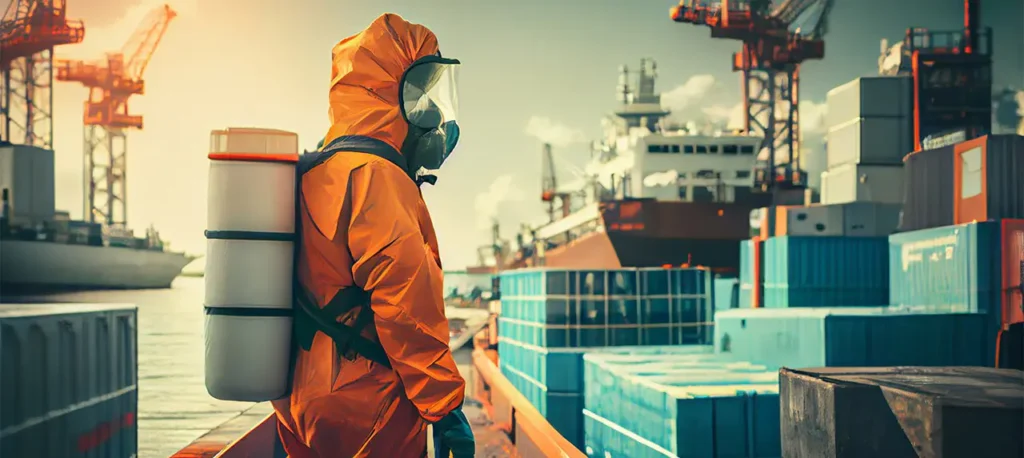
Understanding Hazmat Freight
Hazardous materials, commonly referred to as hazmat, are substances that pose potential risks to health, safety, property, or the environment. They can be solid, liquid, or gas and are categorized based on their properties, including flammability, toxicity, reactivity, and environmental impact. The classification of hazmat is crucial for ensuring safe handling, transportation, and disposal.
The United Nations (UN) has established a systematic classification for hazardous materials, which includes nine main classes, ranging from explosives (Class 1) to radioactive materials (Class 7). Understanding these classifications is essential for companies that import goods from China to Guatemala, as they dictate specific regulations and requirements for shipping.
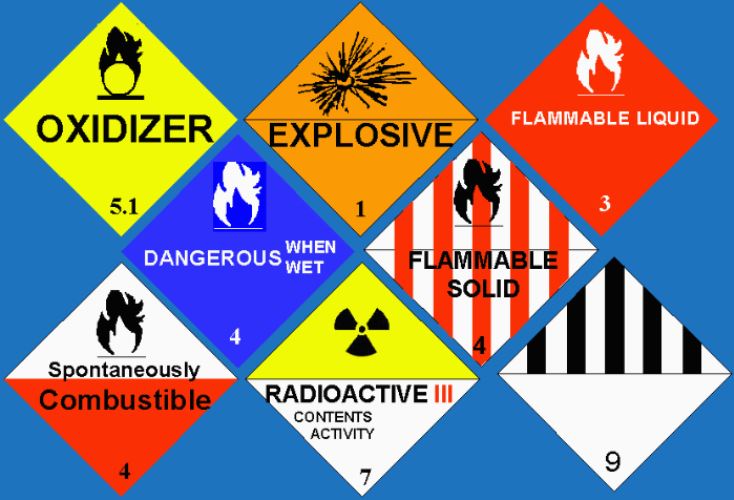
Common Types of Hazmat Goods Shipped from China to Guatemala
When shipping hazmat materials from China to Guatemala, various types of goods are frequently transported, including:
| Hazmat Type | Description | Examples |
|---|---|---|
| Corrosives | Substances that can damage living tissue or materials | Acids, alkalis, and certain cleaning agents |
| Flammable Liquids | Liquids that can ignite easily | Gasoline, ethanol, and solvents |
| Toxic Substances | Materials that can cause harm if inhaled or ingested | Pesticides, chemicals, and some pharmaceuticals |
| Radioactive Materials | Materials that emit ionizing radiation | Certain medical supplies or industrial equipment |
| Compressed Gases | Gases stored under pressure | Propane, natural gas, and refrigerants |
Companies need to be aware of the specific materials they are transporting to adhere to the corresponding regulations and safety protocols.
International Regulations Governing Hazmat Transportation
The transport of hazardous materials is governed by stringent international regulations to mitigate risks associated with their handling and shipping. Key regulatory frameworks include:
-
International Air Transport Association (IATA): Governs air freight transport of hazmat. Compliance with the IATA Dangerous Goods Regulations (DGR) is mandatory for air shipments.
-
International Maritime Organization (IMO): Regulates the transport of hazardous materials by sea under the International Maritime Dangerous Goods (IMDG) Code. This includes specific labeling, documentation, and packaging requirements for ocean freight.
-
United Nations Recommendations on the Transport of Dangerous Goods: Provides a comprehensive guide for the safe transport of hazmat across all transport modes and is often referenced in national regulations.
Understanding these regulations is crucial for anyone importing goods from China to Guatemala, as failure to comply can result in delays, fines, or even legal action.
READ MORE:
- Shipping From China to the United States
- Shipping From China TO Canada
- Shipping From China TO Mexico
- Shipping From China to Panama
- Shipping From China to Costa Rica
- Shipping From China to Brazil
- Shipping From China TO Colombia
- Shipping From China to Jamaica
- Shipping From China to Venezuela
Challenges in Hazmat Shipping from China to Guatemala
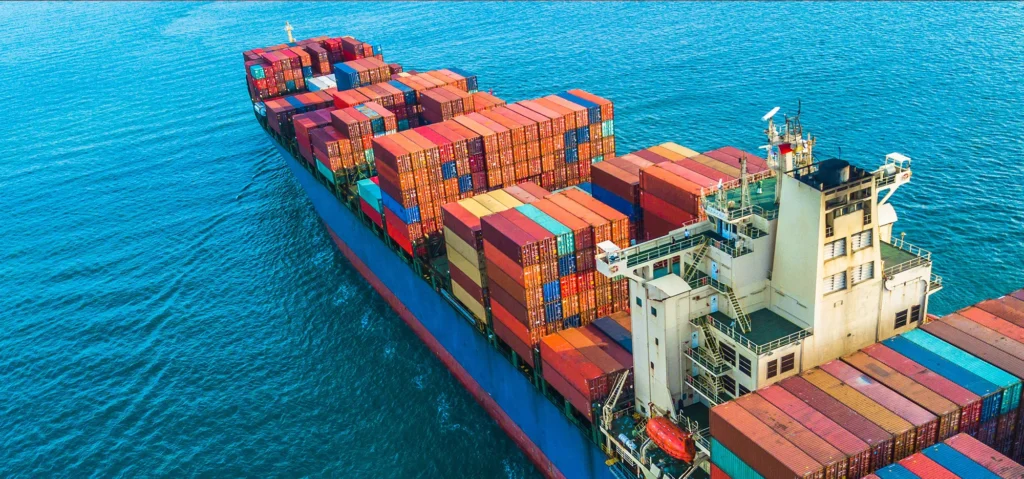
Strict Regulatory Compliance
Navigating the complexities of hazmat shipping demands strict adherence to international regulations. Importers must stay informed about changes in laws and guidelines to avoid penalties. Regulatory bodies in both China and Guatemala have rigorous standards that must be followed, including proper classification, handling, and disposal of hazardous materials.
Additionally, understanding the compliance requirements in both countries can be challenging due to differences in regulatory practices and expectations. Engaging a professional freight forwarder, such as Dantful International Logistics, can alleviate concerns, ensuring adherence to all regulations throughout the shipping process.
Documentation Requirements
Hazmat shipments necessitate extensive documentation to ensure the safe transport of materials. Common documents required include:
- Safety Data Sheets (SDS): Detailed information about the hazards of the materials being shipped.
- Dangerous Goods Declaration: A mandatory document that indicates the presence of hazardous materials.
- Customs Declarations: Required for clearing hazmat shipments through customs, ensuring compliance with local regulations.
Failure to provide complete or accurate documentation can lead to delays, fines, or confiscation of goods, emphasizing the importance of thorough preparation.
Packaging and Labeling Standards
Proper packaging and labeling are critical for hazmat shipping. Regulations specify that hazmat materials must be packaged in materials that can withstand various conditions during transport. Packaging must also include appropriate UN identification numbers and hazard labels to inform handlers and emergency responders of the risks involved.
Packaging must be compliant with international standards such as:
- UN Packaging Group Standards: Outlines specific requirements based on the type and level of hazard.
- IATA and IMDG guidelines: Provide additional requirements specifically for air and maritime transport.
Ensuring compliance with these standards is crucial to avoid accidents and ensure the safety of personnel involved in handling hazmat goods.
Route Planning and Mode Selection
Effective route planning and selection of transportation modes are critical in hazmat shipping. Importers must consider factors such as the nature of the hazardous material, available transportation options, and the final destination in Guatemala.
Choosing the appropriate mode of transport—be it air freight or sea freight—depends on the urgency and nature of the goods. Air freight may offer speed but comes with more stringent regulatory requirements and higher costs, while sea freight may be more economical for bulk shipments.
Additionally, route planning must account for any restrictions related to hazardous materials, including identifying areas where such goods are not permitted. A professional logistics provider like Dantful can assist in optimizing route planning and ensuring compliance with all regulations.
By addressing these challenges with expertise and thorough preparation, businesses can successfully navigate the complexities of hazmat shipping from China to Guatemala. For tailored solutions and comprehensive logistics services, consider partnering with Dantful International Logistics, your reliable freight forwarder for safe and efficient hazmat transportation.
Dantful International Logistics Services:
- Dantful Ocean Freight Services
- Air Freight From China
- Amazon FBA Freight Forwarding
- WAREHOUSE Services
- One-Stop Customs Clearance Solution
- Cargo Insurance Services in China
- DDP Shipping Services By Dantful Logistics
- Out of Gauge Cargo Transportation Shipping Services
Role of Specialized Hazmat Freight Forwarders
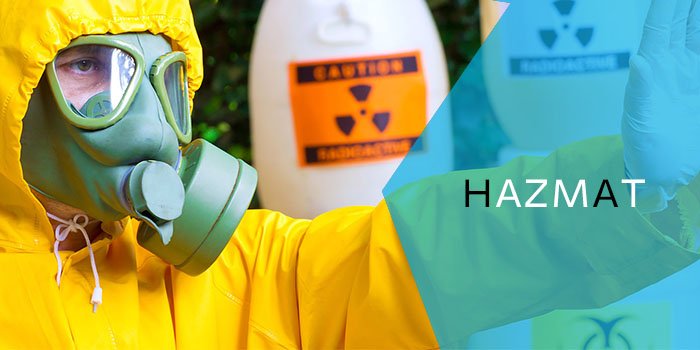
Expertise in Hazmat Regulations
Specialized hazmat freight forwarders possess extensive knowledge of the myriad regulations governing the transportation of hazardous materials. They understand the requirements set forth by various international regulatory bodies, including the IATA, IMO, and the UN, ensuring compliance at every stage of the shipping process. This expertise helps businesses avoid costly penalties and delays that can arise from regulatory non-compliance.
These professionals stay updated on changing regulations and can interpret complex legal language, making it easier for importers to understand their responsibilities. They provide guidance on the classification of materials and the implications of each classification, helping businesses navigate the intricacies of hazmat shipping.
Risk Assessment and Mitigation
Effective risk assessment is a critical function of specialized hazmat freight forwarders. They evaluate potential hazards associated with the materials being transported and develop strategies to mitigate these risks. This involves assessing the conditions under which the materials will be handled, transported, and stored, identifying potential points of failure, and implementing controls to minimize risks.
By anticipating potential issues and creating contingency plans, these professionals help ensure that shipments remain safe throughout their journey. Their risk mitigation strategies also extend to compliance with insurance requirements, providing peace of mind for businesses dealing with hazardous materials.
Proper Documentation Handling
The handling of documentation for hazmat shipping requires meticulous attention to detail. Specialized freight forwarders are well-versed in preparing and managing all requisite documents, such as the Safety Data Sheet (SDS), Dangerous Goods Declaration, and various customs declarations.
They ensure that all documentation is accurate, complete, and compliant with international, national, and local regulations. This diligence prevents delays and helps maintain a smooth transit process, avoiding issues that could arise from incomplete or incorrect information.
Coordination with Carriers and Customs Authorities
Collaboration between carriers, customs authorities, and freight forwarders is crucial in hazmat shipping. Specialized forwarders act as the liaison between all parties involved, ensuring that everyone adheres to the relevant regulations and that the shipments are handled correctly.
They coordinate with carriers to arrange transportation methods that align with the specific requirements of the hazardous materials being shipped, whether by land, air, or sea. Furthermore, forwarders facilitate communication with customs authorities, ensuring that all necessary approvals are obtained and that shipments clear customs without unnecessary delays.
Engaging a specialized hazmat freight forwarder provides businesses with a streamlined and efficient process, reducing the likelihood of issues arising during transportation.
Advantages of Dantful in Hazmat Freight Forwarding Services
Dantful International Logistics stands out as a premier choice for hazmat freight forwarding. With a team of experts skilled in navigating the complexities of hazardous materials transportation, Dantful ensures compliance with regulations, effective risk assessment, and efficient documentation handling.
We offers tailored solutions that adapt to the specific needs of each shipment, ensuring that all safety measures are taken and that businesses can focus on their core operations. Dantful’s extensive network with carriers and customs authorities guarantees smooth coordination and expedient customs clearance processes. By choosing Dantful, businesses can confidently ship their hazmat goods, knowing they are in expert hands.
Key Steps in Hazmat Freight Forwarding Process
Classification and Identification of Hazardous Materials
The first step in the hazmat freight forwarding process is accurately classifying and identifying the hazardous materials being shipped. This involves determining the specific type of hazmat based on the UN classification system, which categorizes materials into distinct classes depending on their properties and potential hazards.
Proper classification is critical as it dictates the regulations that apply to the shipment, influencing everything from packaging to transportation mode. Engaging a knowledgeable freight forwarder can facilitate this process, ensuring that materials are categorized correctly from the outset.
Selecting Appropriate Packaging and Containment
Once the materials are classified, the next step is selecting appropriate packaging and containment methods. Hazmat materials require specialized packaging to prevent leaks, spills, or contamination during transport.
The packaging must adhere to established international standards, such as those specified by the UN and IATA. This may include using specific types of drums, containers, or boxes that are designed to withstand the rigors of transportation while providing adequate protection for the materials inside. Proper packaging also includes the use of correct labels and placards to clearly identify the nature of the contents.
Preparing Required Documentation
Documentation is essential in hazmat shipping, as it provides crucial information about the materials being transported and ensures compliance with regulations. This step involves compiling all necessary documents, including:
- Safety Data Sheets (SDS)
- Dangerous Goods Declaration
- Customs declarations
Specialized hazmat freight forwarders excel in preparing these documents accurately and ensuring that they accompany the shipment, significantly reducing the chances of delays or customs issues.
Choosing Suitable Transportation Modes
Selecting the right mode of transportation is vital in the hazmat shipping process. Factors such as cost, transit time, and the nature of the hazardous materials play a significant role in determining the best option.
Hazmat materials can be transported by air, sea, or land, each having its advantages and disadvantages. For example, air freight may offer speed but come with stricter regulations and higher costs, while sea freight may be more economical for bulk shipments but take longer. Collaboration with an experienced freight forwarder ensures that the most suitable transportation mode is chosen, optimizing efficiency and compliance.
Customs Clearance Procedures
The final step in the hazmat freight forwarding process involves navigating customs clearance procedures. Hazmat shipments are subject to rigorous scrutiny by customs authorities, requiring precise and comprehensive documentation.
Specialized freight forwarders play a pivotal role in facilitating the customs clearance process. They ensure that all required documents are submitted accurately and timely, allowing for smoother processing and reducing the likelihood of delays. By leveraging their expertise and relationships with customs officials, freight forwarders can help expedite approvals, ensuring that hazardous materials reach their destination without unnecessary disruption.
Dantful International Logistics is well-equipped to manage each of these steps effectively, providing businesses with a comprehensive and reliable solution for their hazmat freight forwarding needs.
Technology in Hazmat Freight Forwarding
Tracking and Monitoring Systems
In recent years, the integration of advanced tracking and monitoring systems has revolutionized hazmat freight forwarding. These systems utilize GPS technology and RFID tags (Radio Frequency Identification) to provide real-time visibility into the location and status of hazardous materials during transportation.
Tracking systems allow shippers and freight forwarders to monitor shipments closely, ensuring they are on the correct route and making timely deliveries. This capability is crucial for hazmat shipments, as it enables proactive responses to any potential issues that may arise during transit—such as unexpected delays or route changes—that could compromise safety.
Additionally, tracking systems can provide alerts about environmental conditions that may affect the shipment, such as temperature fluctuations or exposure to moisture. These alerts help mitigate risks associated with the transport of hazardous materials, ensuring compliance with safety regulations and protecting the integrity of the cargo.
Digital Documentation and E-Filing
The shift towards digital documentation and e-filing has significantly improved the efficiency and accuracy of hazmat freight forwarding. Electronic documentation systems streamline the preparation and submission of all required shipping documents, including Safety Data Sheets (SDS), Dangerous Goods Declarations, and customs paperwork.
By adopting digital solutions, shippers can reduce the risk of human error associated with manual documentation processes. E-filing allows for quicker approvals from customs authorities, which is particularly important for hazmat shipments that often undergo rigorous checks.
Furthermore, digital documentation facilitates better record-keeping and retrieval, allowing for easy access to historical data and enhancing transparency in the shipping process. This level of efficiency is critical for businesses that need to comply with various regulations and standards governing hazmat transportation.
Safety and Environmental Monitoring Systems
Safety and environmental monitoring systems are essential components of hazmat freight forwarding, ensuring that shipments are handled safely and comply with environmental regulations. These systems employ sensors and data analytics to monitor various factors, including temperature, pressure, humidity, and even potential leaks.
For example, in the transport of flammable or corrosive materials, continuous monitoring can detect dangerous conditions that may lead to spills or other hazardous incidents. Such proactive measures allow for immediate intervention, preventing accidents and safeguarding the environment.
Integrating safety and environmental monitoring systems into the hazmat transportation process also aligns with sustainability goals. By minimizing the risk of spills or contamination, companies can reduce their environmental footprint and adhere to global standards for environmental protection.
Read More:
- Shipping From China to the United States
- Shipping From China TO CANADA
- Shipping From China To Netherlands
- Shipping From China To UNITED KINGDOM
- Shipping From China To ALGERIA
- Shipping from China to UAE
- Shipping from China to Saudi Arabia
Best Practices for Shippers
Proper Declaration of Goods
Accurate and thorough declaration of goods is a fundamental best practice in hazmat shipping. Shippers must provide complete information about the hazardous materials being transported, including their nature, classification, and quantity. This information is critical for compliance with international and local regulations and ensures that all parties involved in the shipping process are aware of the risks.
Proper declaration also facilitates smoother customs clearance and can significantly reduce the likelihood of delays or penalties. Engaging with a knowledgeable freight forwarder, such as Dantful International Logistics, can help ensure that all necessary information is accurately communicated and documented.
Adherence to Packaging Guidelines
Compliance with established packaging guidelines is non-negotiable in hazmat shipping. Each type of hazardous material comes with specific packaging requirements designed to minimize the risk of leaks, spills, or contamination. These guidelines often include using certified containers, incorporating appropriate labeling, and ensuring that packaging materials are compatible with the contents.
Shippers should regularly review and stay updated on packaging regulations from governing bodies such as the IATA and IMO. By adhering to these guidelines, shippers not only protect the safety of their goods but also enhance the safety of all personnel involved in the transportation process.
Timely Communication with Freight Forwarders
Effective communication between shippers and freight forwarders is vital for successful hazmat transportation. Timely communication ensures that all parties are informed of key developments, potential issues, or changes in shipping schedules.
Establishing clear lines of communication allows for prompt updates regarding the status of shipments, any regulatory changes, or emerging risks that may arise during transit. Shippers should maintain open channels of communication with their freight forwarders, providing them with all necessary information regarding the shipment and responding quickly to any inquiries or requests for documentation.
By fostering a collaborative relationship with freight forwarders, shippers can enhance the overall efficiency and safety of hazmat transportation.
Dantful International Logistics excels in providing comprehensive support for hazardous materials shipping, ensuring adherence to best practices and leveraging advanced technology to optimize the freight forwarding process.
FAQs
1. What are hazardous materials (hazmat)?
Hazardous materials, or hazmat, are substances that pose a risk to health, safety, property, or the environment. They can be classified into various categories based on their properties, such as flammability, toxicity, and reactivity. The United Nations (UN) has established a classification system with nine main classes of hazardous materials.
2. What types of hazmat goods are commonly shipped from China to Guatemala?
Common hazmat goods shipped from China to Guatemala include:
- Corrosives (e.g., acids and cleaning agents)
- Flammable Liquids (e.g., gasoline and solvents)
- Toxic Substances (e.g., pesticides and some pharmaceuticals)
- Radioactive Materials (e.g., medical supplies)
- Compressed Gases (e.g., propane and natural gas)
3. What are the international regulations governing hazmat transportation?
Hazmat transportation is regulated by various bodies, including:
- International Air Transport Association (IATA) for air freight.
- International Maritime Organization (IMO) for sea transport.
- United Nations Recommendations on the Transport of Dangerous Goods, which serves as a guideline for safe hazmat transport across all modes.
4. What are the challenges in hazmat shipping?
Challenges include:
- Strict Regulatory Compliance: Adhering to complex regulations in both China and Guatemala.
- Documentation Requirements: Ensuring accurate and complete shipping documents.
- Packaging and Labeling Standards: Following regulations for safe packaging and proper labeling.
- Route Planning and Mode Selection: Choosing the most efficient and compliant transportation methods.
5. Why should I engage a specialized hazmat freight forwarder?
Specialized hazmat freight forwarders offer expertise in navigating regulations, risk assessment, documentation handling, and coordination with carriers and customs authorities. They help ensure compliance, mitigate risks, and streamline the shipping process.
6. What best practices should shippers follow?
Best practices include:
- Proper Declaration of Goods: Accurately stating the nature and classification of the hazardous materials.
- Adherence to Packaging Guidelines: Following specific packaging requirements to ensure safety.
- Timely Communication with Freight Forwarders: Maintaining open communication to address any developments or issues promptly.
7. How does technology enhance hazmat freight forwarding?
Technology improves hazmat freight forwarding through:
- Tracking and Monitoring Systems: Providing real-time visibility of shipments.
- Digital Documentation and E-filing: Streamlining the preparation and submission of shipping documents.
- Safety and Environmental Monitoring Systems: Continuously monitoring conditions to prevent hazardous incidents.

Young Chiu is a seasoned logistics expert with over 15 years of experience in international freight forwarding and supply chain management. As CEO of Dantful International Logistics, Young is dedicated to providing valuable insights and practical advice to businesses navigating the complexities of global shipping.
The other language versions of this article
- الدليل الشامل لشركة شحن المواد الخطرة من الصين إلى جواتيمالا
- De ultieme gids voor Hazmat Freight Forwarder van China naar Guatemala
- Le guide ultime du transitaire de matières dangereuses de la Chine vers le Guatemala
- Der ultimative Leitfaden für den Gefahrguttransport von China nach Guatemala
- La guida definitiva allo spedizioniere di merci pericolose dalla Cina al Guatemala
- La guía definitiva para el transporte de materiales peligrosos desde China a Guatemala
- O guia definitivo para o despachante de cargas Hazmat da China para a Guatemala
- Полное руководство по экспедированию опасных грузов из Китая в Гватемалу
- Çin’den Guatemala’ya Tehlikeli Madde Taşımacılığı İçin Nihai Kılavuz



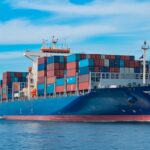

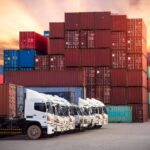



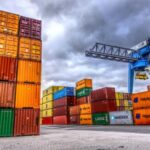

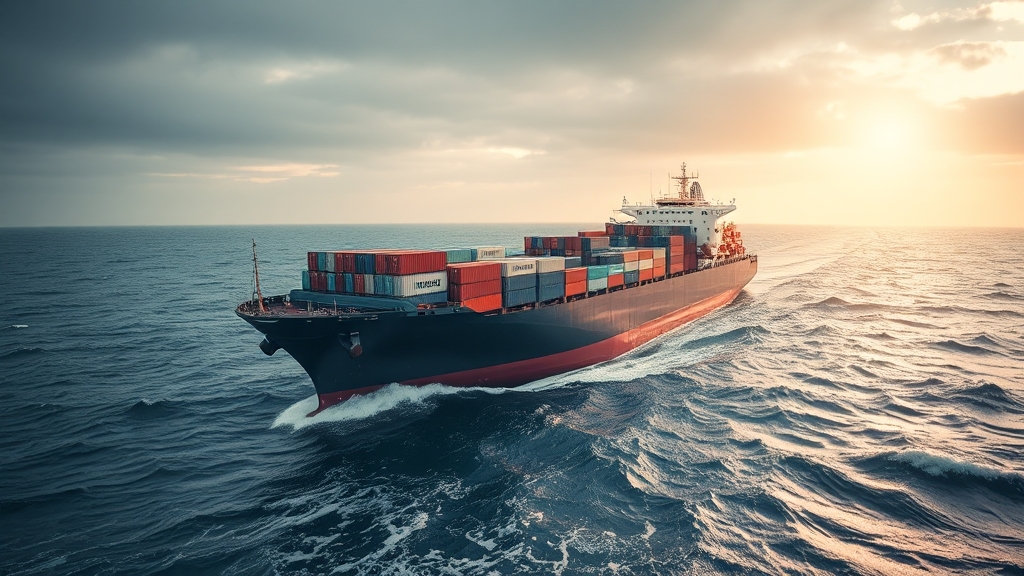
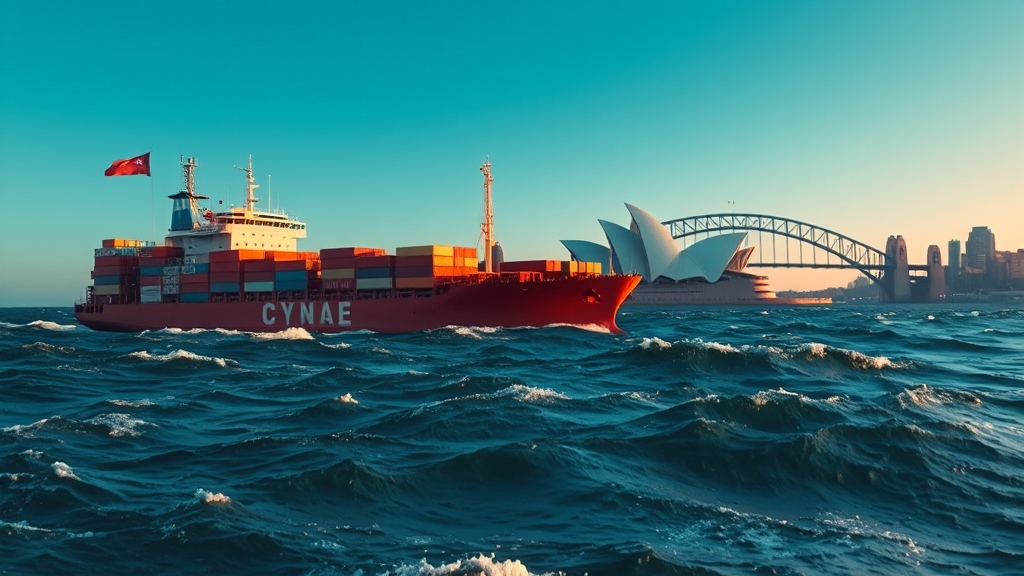
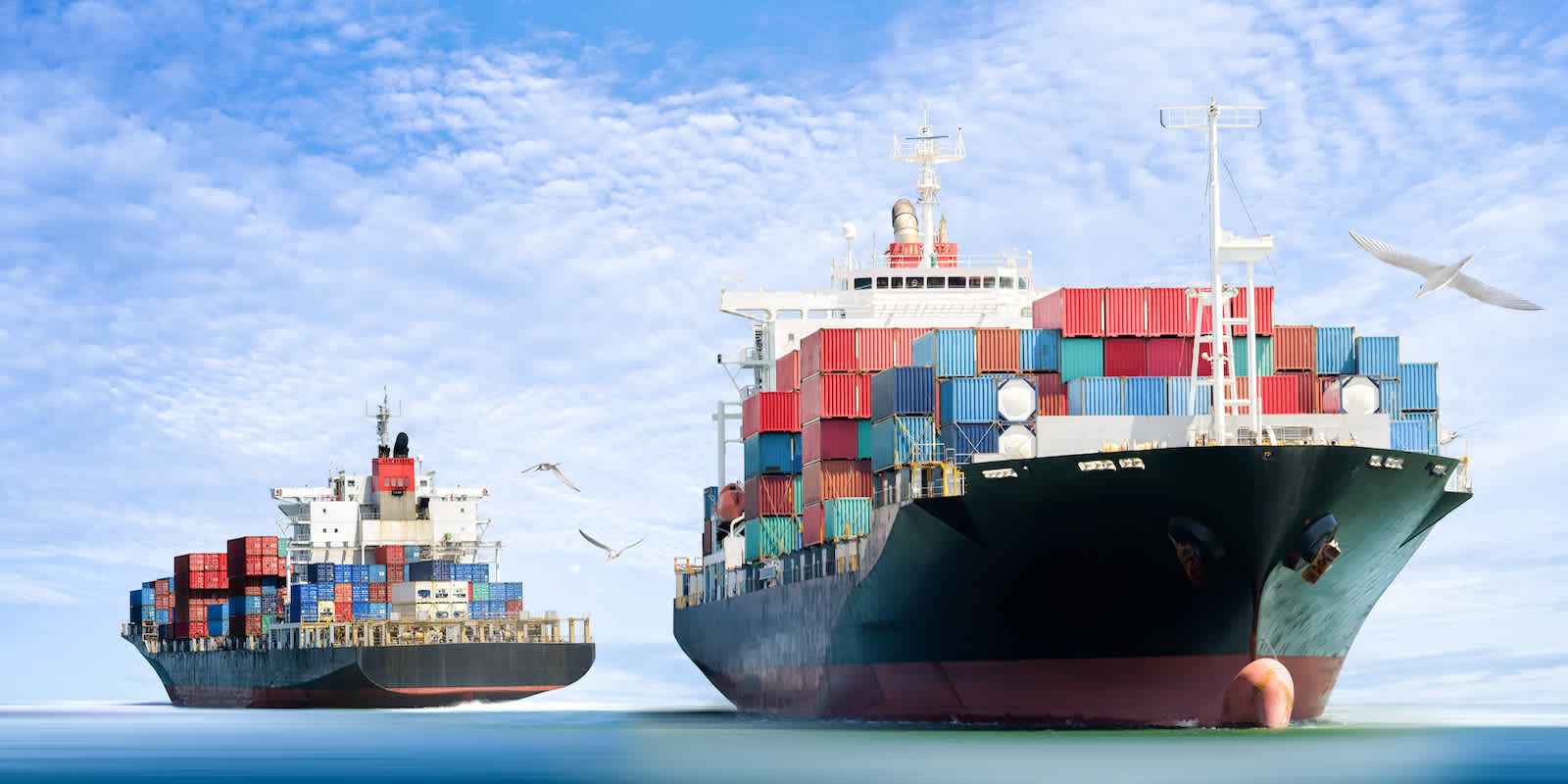
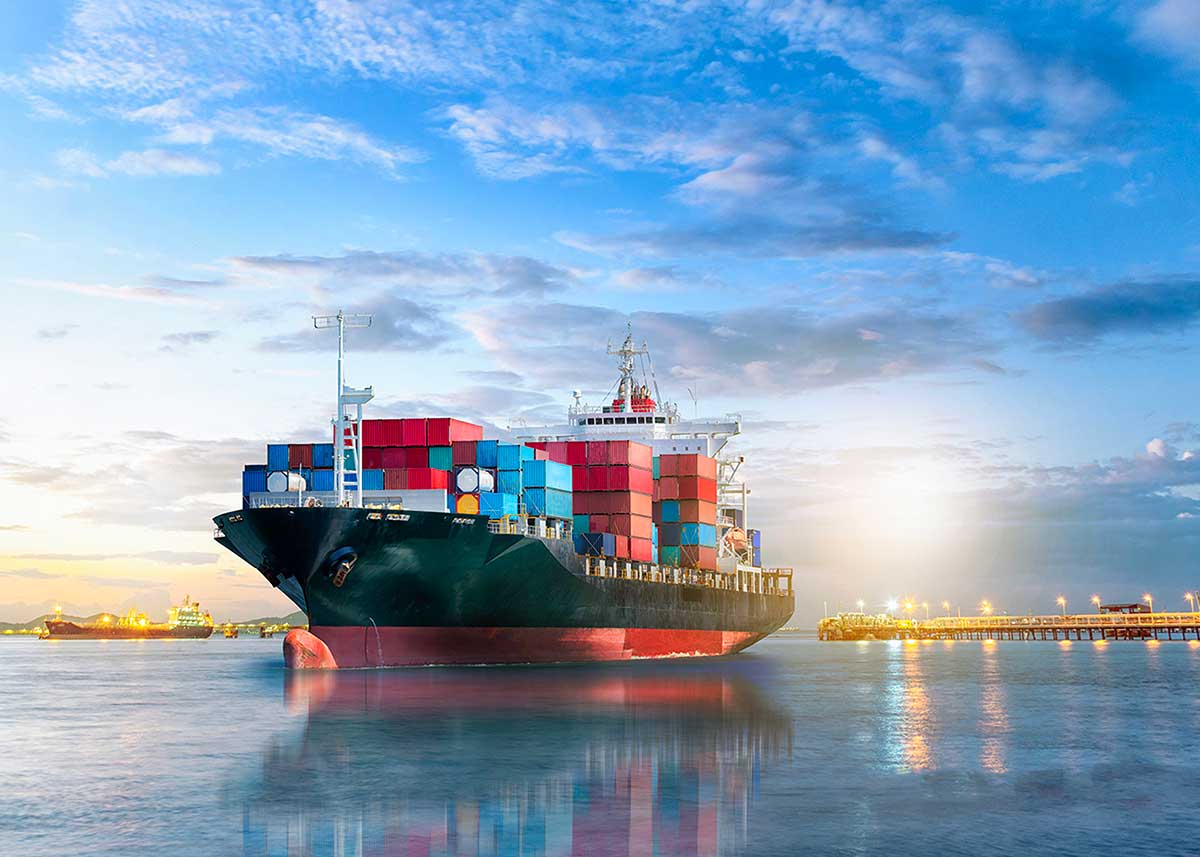
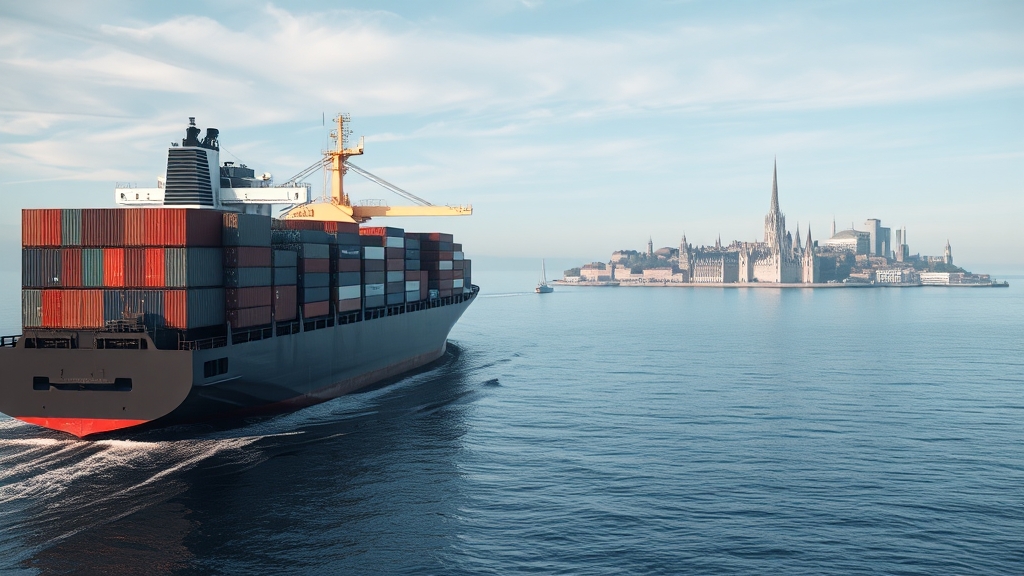





 Afrikaans
Afrikaans Shqip
Shqip አማርኛ
አማርኛ العربية
العربية Հայերեն
Հայերեն Azərbaycan dili
Azərbaycan dili Euskara
Euskara Беларуская мова
Беларуская мова বাংলা
বাংলা Bosanski
Bosanski Български
Български Català
Català Cebuano
Cebuano Chichewa
Chichewa 简体中文
简体中文 繁體中文
繁體中文 Corsu
Corsu Hrvatski
Hrvatski Čeština
Čeština Dansk
Dansk Nederlands
Nederlands English
English Esperanto
Esperanto Eesti
Eesti Filipino
Filipino Suomi
Suomi Français
Français Galego
Galego ქართული
ქართული Deutsch
Deutsch Ελληνικά
Ελληνικά Kreyol ayisyen
Kreyol ayisyen Harshen Hausa
Harshen Hausa Ōlelo Hawaiʻi
Ōlelo Hawaiʻi עִבְרִית
עִבְרִית हिन्दी
हिन्दी Hmong
Hmong Magyar
Magyar Íslenska
Íslenska Igbo
Igbo Bahasa Indonesia
Bahasa Indonesia Gaeilge
Gaeilge Italiano
Italiano 日本語
日本語 Basa Jawa
Basa Jawa ಕನ್ನಡ
ಕನ್ನಡ Қазақ тілі
Қазақ тілі ភាសាខ្មែរ
ភាសាខ្មែរ 한국어
한국어 كوردی
كوردی Кыргызча
Кыргызча ພາສາລາວ
ພາສາລາວ Latin
Latin Latviešu valoda
Latviešu valoda Lietuvių kalba
Lietuvių kalba Lëtzebuergesch
Lëtzebuergesch Македонски јазик
Македонски јазик Malagasy
Malagasy Bahasa Melayu
Bahasa Melayu മലയാളം
മലയാളം Maltese
Maltese Te Reo Māori
Te Reo Māori मराठी
मराठी Монгол
Монгол ဗမာစာ
ဗမာစာ नेपाली
नेपाली Norsk bokmål
Norsk bokmål پښتو
پښتو فارسی
فارسی Polski
Polski Português
Português ਪੰਜਾਬੀ
ਪੰਜਾਬੀ Română
Română Русский
Русский Samoan
Samoan Gàidhlig
Gàidhlig Српски језик
Српски језик Sesotho
Sesotho Shona
Shona سنڌي
سنڌي සිංහල
සිංහල Slovenčina
Slovenčina Slovenščina
Slovenščina Afsoomaali
Afsoomaali Español
Español Basa Sunda
Basa Sunda Kiswahili
Kiswahili Svenska
Svenska Тоҷикӣ
Тоҷикӣ தமிழ்
தமிழ் తెలుగు
తెలుగు ไทย
ไทย Türkçe
Türkçe Українська
Українська اردو
اردو O‘zbekcha
O‘zbekcha Tiếng Việt
Tiếng Việt Cymraeg
Cymraeg יידיש
יידיש Yorùbá
Yorùbá Zulu
Zulu